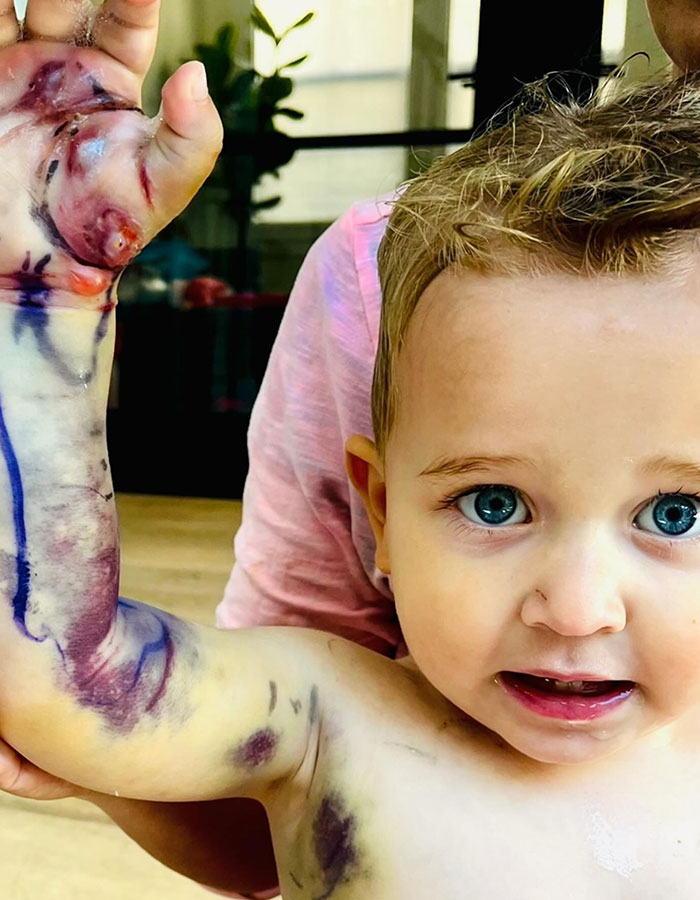[ad_1]
A California family was charged nearly $300,000 in medical bills after their two-year-old son was bitten by a rattlesnake.
Brigland Pfeffer was playing with his siblings in the backyard of his San Diego home, just a few feet away from his mother, when he made a loud noise.
“I thought he was going to die. We all thought he was going to die,” Brigland’s mother, Lindsay Pfeffer, told CBS8.
After calling 911, an ambulance took them to Palomar Medical Center Escondido, the closest medical facility that carried antivenom, located 25 minutes away from their home.
A family in San Diego was charged $297,461 in medical bills after their two-year-old boy, Brigland Pfeffer, was bitten by a rattlesnake in his backyard
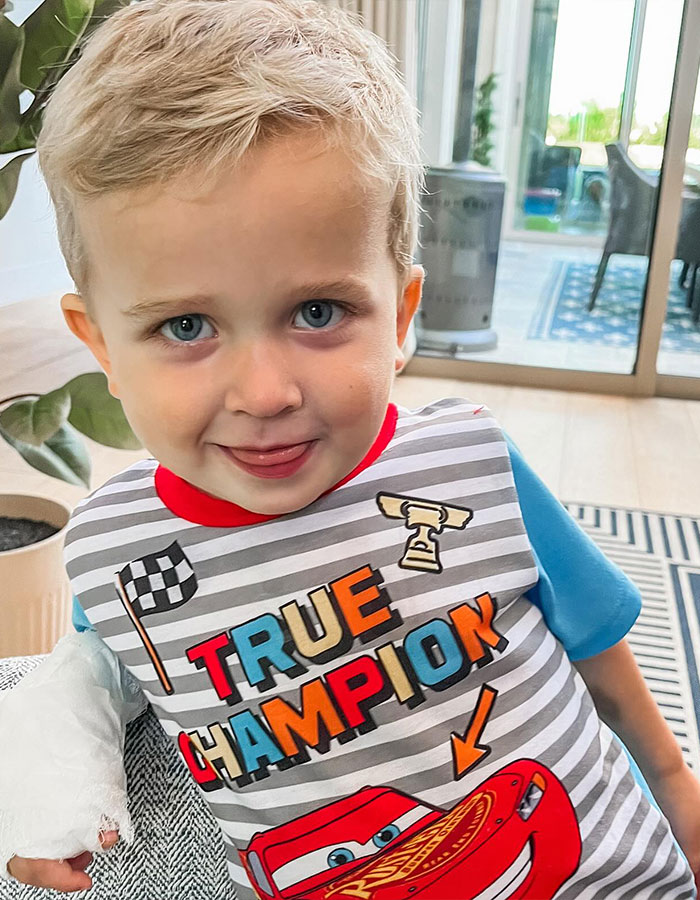
Image credits: dr.lindsay.pfeffer
The poison moved quickly through Brigland’s body. By the time they reached the hospital, the toddler’s hand was swollen and purple.
Unable to start an IV (intravenous therapy), the medical staff administered the antivenom using a procedure called intraosseous vascular access, which delivers medicine into the bone marrow cavity.
The boy was then transferred to the pediatric intensive care unit at Rady Children’s Hospital, the largest children’s hospital on the West Coast, where he received more antivenom. In the end, it took 30 vials of antivenom to treat him.
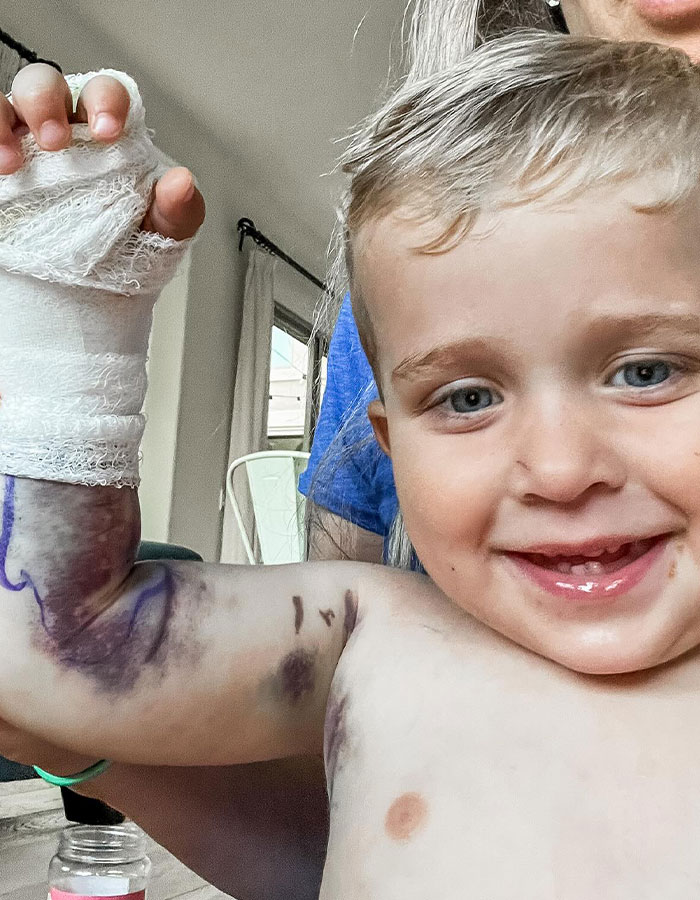
Image credits: dr.lindsay.pfeffer
“Nobody understands how he’s alive. This is unheard of why he actually made it,” Pfeffer said. “Because he’s 2, he’s more likely to die, but because he’s 2, he’s more likely to heal. But you have to survive to get there.”
The Pfeffers were charged a total of $297,461 for the treatment, which included two ambulance rides, an emergency room visit, and a couple of days in pediatric intensive care, according to KFF Health News.
Anavip, the antivenom used on the boy, accounts for $213,278.80 of the bill.
Lindsay Pfeffer, the boy’s mom, called 911 immediately after he heard his son scream and saw a rattlesnake, the largest venomous snake in the US
View this post on Instagram
Image credits: dr.lindsay.pfeffer
Brigland’s family was charged two different prices for Anavip at the healthcare facilities.
Palomar Medical Center—the first hospital the boy visited—charged $9,574.60 per vial, for a total of $95,746 for the first 10 doses of the antivenom.
Then, Rady Children’s Hospital charged $5,876.64 for each vial, totaling $117,532.80 for the 20 vials Brigland received there.
Medicare—the US government program for those with limited income and resources—pays about $2,000 for a vial of Anavip, which is the price hospitals pay for the antivenom, according to Stacie Dusetzina, a professor of health policy at Vanderbilt University Medical Center.
“Nobody understands how he’s alive. This is unheard of why he actually made it,” Lindsay said
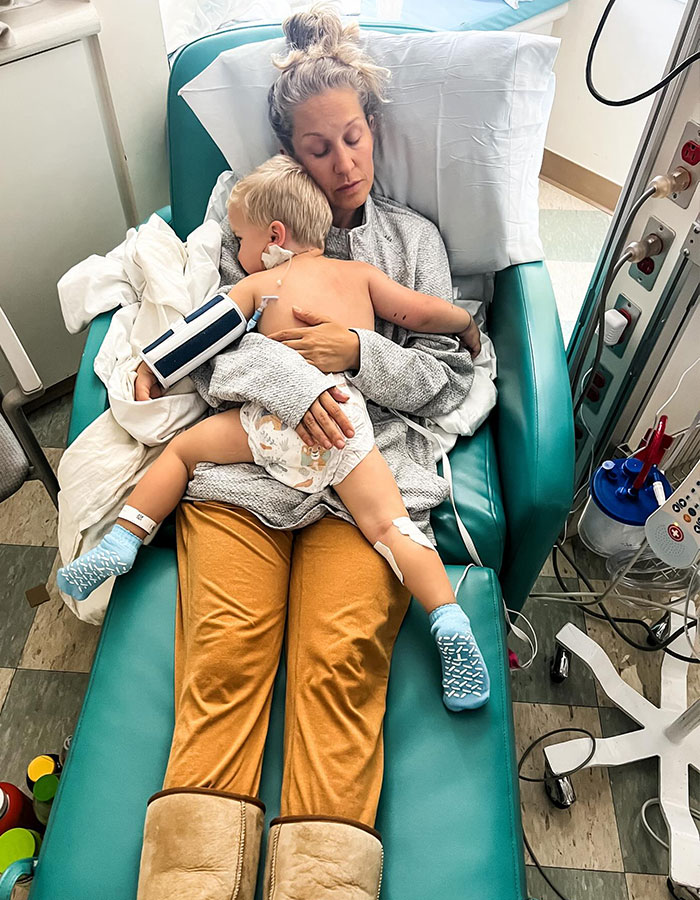
Image credits: dr.lindsay.pfeffer
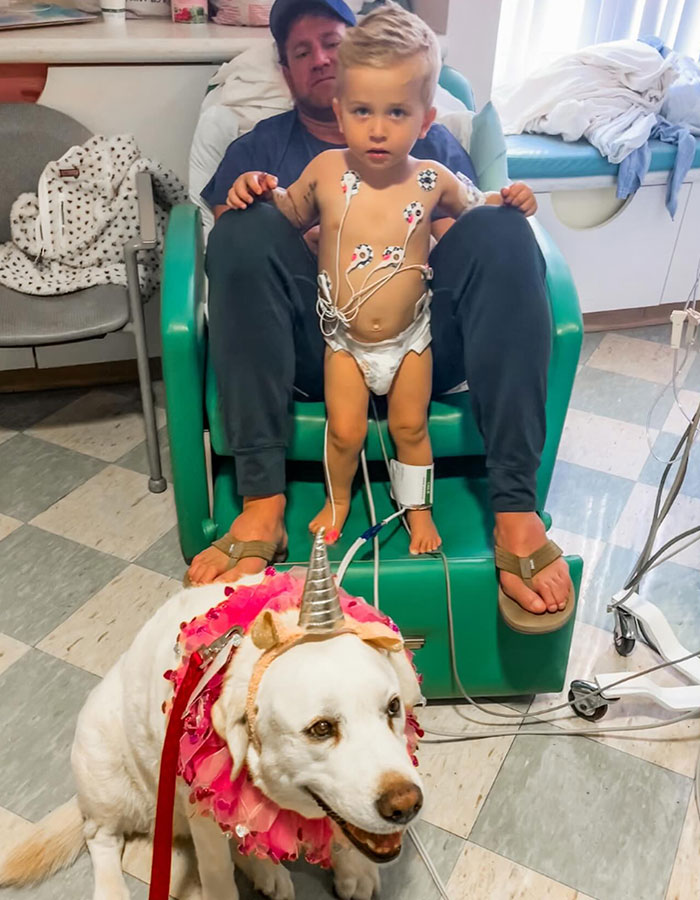
Image credits: dr.lindsay.pfeffer
Leslie Boyer, a doctor and toxicology researcher, broke down the cost of antivenom in a 2015 editorial published in the American Journal of Medicine.
Boyer’s study reveals that the hefty price of antivenom in the US is not due to high manufacturing costs or the cost of the drug itself; instead, it appears to be the result of hospitals marking the product up to cover operational expenses and increase profits.
Gathering data from factory supervisors, animal managers, hospital pharmacists, and other sources, the doctor estimated the cost of a hypothetical antivenom at $14,624 per vial. (On average, a patient requires 18 vials to treat a snakebite, as per KFF Health News.)
Where does this figure come from? According to Boyer, the venom itself accounts for only 2 cents of the total. Manufacturing costs $9, and clinical trials account for $300 per vial.
But $10,250—over 70% of the total price—is attributable to hospital charges.
Anavip, the antivenom used on the boy, accounts for $213,278.80 of the total medical bill
View this post on Instagram
“By far the greatest contributor to final patient billing was the portion of hospital charges later discounted for contracted payers, a negotiated amount that varied widely among hospitals but that does not represent actual collections for the majority of patients,” the doctor wrote.
“This analysis demonstrates that well more than half of the astonishing hospital charges reported in the lay media are not true costs at all, but are instead attributable to the idiosyncrasies of the US healthcare finance system.”
Moreover, there are only two big manufacturers in the antivenom market (Anavip and CroFab), which also explains the sky-high cost of the drug. In the US, even when the FDA approves a cheaper copycat drug, manufacturers can manipulate the patent process to keep competitors out by claiming ownership of certain product information, as per KFF Health News.
When Anavip entered the market, they were sued for patent infringement by CroFab’s maker. The case was settled in 2014, with Anavip promising to pay BTG royalties on its sales of antivenom until 2028. As a result, the manufacturer raised their prices to cover the millions of dollars in legal costs, Boyer said.
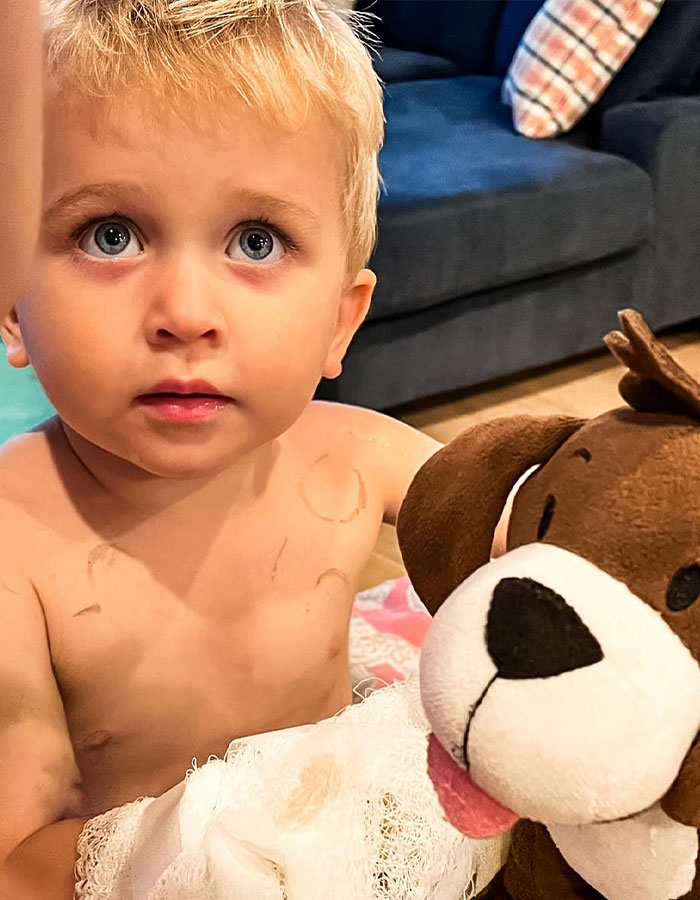
Image credits: dr.lindsay.pfeffer
Approximately 8,000 people in the US are bitten by venomous snakes each year, as per the Centers for Disease Control and Prevention (CDC). About five of those people die.
For those bitten by rattlesnakes, 10–44% will have lasting injuries; they may lose all or part of a finger or lose the ability to use it. Rattlesnakes, the largest venomous snakes in the US, can be found across the country sunning near logs, boulders, or open areas, and do not always rattle before biting, the CDC notes.
As not all emergency rooms carry antivenom, it’s recommended to go to a large hospital. Depending on the severity of the bite, initial treatment may begin at an urgent care facility while arrangements are made for transfer to a hospital equipped to handle snake bites.
Nerve damage and scar tissue have left Brigland’s right thumb much weaker, and he is now left-handed
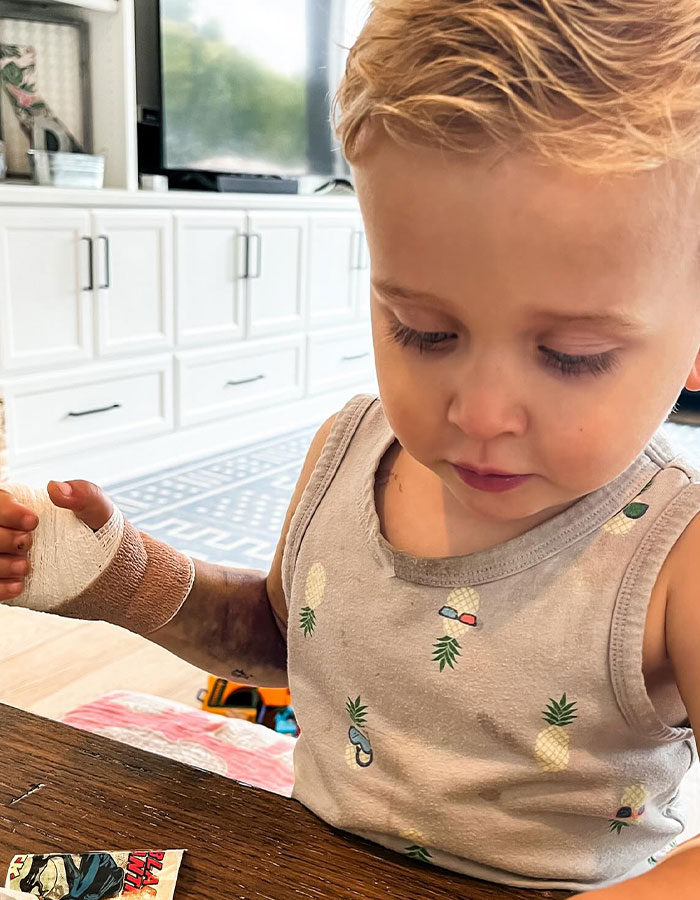
Image credits: dr.lindsay.pfeffer
Since being bitten in May, Brigland’s hand has healed, though nerve damage and scar tissue have left his right thumb much weaker. His family has installed snake fencing around their yard.
Ultimately, Sharp Health Plan, the insurer covering the toddler, negotiated down the charges for his treatment, and the family paid $7,200. However, this summer, Pfeffer received a letter indicating the family owes an additional $11,300 for one of the ambulance transports.
Bored Panda has contacted Linsday Pfeffer for comment.
“We deserve and desperately need universal healthcare,” one reader exclaimed





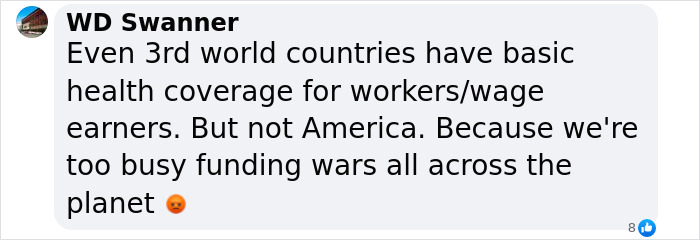


The post “That’s Outrageous!”: Parents Of 2YO Bitten By Rattlesnake Charged $300k For Life-Saving Cure first appeared on Bored Panda.
[ad_2]
Source link























